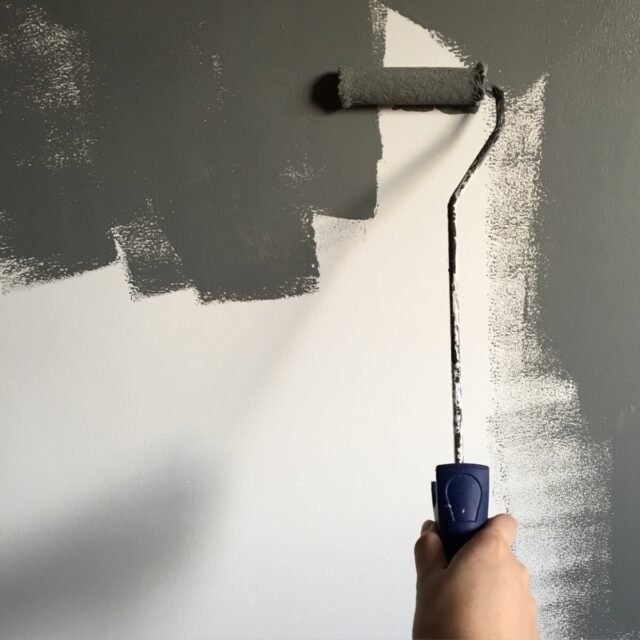Drywall, also known as gypsum board or plasterboard, is one of the most common interior building materials used in construction. Over time, drywall can become damaged from things like accidental impacts, shrinking building foundations, or moisture issues. Learning how to properly repair drywall is an essential skill for any homeowner. With the right tools, materials, and techniques, repairing drywall can be a straightforward DIY project.
What is Drywall?
Drywall is composed of a layer of gypsum plaster sandwiched between two layers of heavy paper. Gypsum is a soft mineral that is extremely fire-resistant and absorbs sound efficiently. The paper facings provide additional strength and allow the drywall to be easily cut and installed.
Drywall panels are available in various sizes and thicknesses. The most common size is 4 x 8 feet sheets that are 1/2 inch thick. Drywall is installed on the interior framing of walls and ceilings and then finished with joint compound and corner beads to create a seamless surface that can be primed and painted.
Why is it Important to Repair Drywall?
There are several reasons why it’s important to repair damaged drywall in a timely manner:
- Prevent Further Damage – Small holes or cracks can expand over time and lead to larger repairs. Fixing problems early prevents more extensive damage.
- Maintain Fire Resistance – Drywall contains fire-resistant gypsum that helps contain fires. Breaches in drywall reduce its fire-resistant properties.
- Improve Appearance – Damaged or cracked drywall is unsightly. Repairing it improves the aesthetic look of walls and ceilings.
- Increase Home Value – Fixing drywall damage keeps your home looking its best and can help maintain property value when it comes time to sell.
- Reduce Pests/Drafts – Cracks or holes allow unwanted air flow and can provide entry points for pests. Timely repairs prevent these issues.
What are the Signs that Drywall Needs Repair?
Here are some common signs that indicate drywall damage that requires repair:
- Holes – Holes of any size that go through the drywall indicate a weak spot that needs patching. Holes are often caused by accidental impacts.
- Cracks – Cracks form when drywall panels shift or settle. They often occur at corners or seams between panels.
- Nail Pops – Over time, nails or screws can work loose and push up against the drywall surface, creating a small protrusion or “pop”.
- Water Damage – Water stains, warped drywall, or soft spongy areas indicate water damage, which can compromise the integrity of the drywall.
- Dents – Dents are depressions in the drywall’s surface that are often caused by impacts from furniture or other objects.
Tools and Materials Needed
Repairing drywall requires a few standard tools and materials that can be easily found at any hardware store:
Drywall Tools:
- Utility Knife – for cutting and scoring drywall.
- Drywall Saw – for cutting patches or holes to size.
- Putty Knife – for applying joint compound.
- Sandpaper – for smoothing repairs between coats.
- Sander – power sanders make smoothing drywall much easier.
- Drywall Taping Knives – for embedding tape and feathering edges.
Drywall Materials:
- Drywall Patch – available in various sizes to match repair areas.
- Joint Compound – used to seal joints and create a smooth finish.
- Drywall Tape – paper or mesh tape applied over seams.
- Primer – seals repairs prior to painting.
- Paint – matches existing wall color.
Step-by-Step Guide on How to Repair Drywall
The process of repairing drywall varies slightly depending on the size and type of damage. Here is a step-by-step overview of how to fix common drywall problems:
Small Holes:
Small holes less than 3 inches wide are the easiest drywall repairs. Follow these steps:
- Cut a drywall patch slightly larger than the hole. Ensure it is square or rectangular.
- Use a putty knife to apply a coat of joint compound to the back of the patch.
- Press the patch over the hole, adhering it to the joint compound.
- Apply joint compound over the patch, feathering the edges to blend with the wall.
- Let the joint compound fully dry, then sand the area smooth.
- Prime and paint the patched area.
Large Holes:
For larger holes up to a few feet wide, a more involved process is required:
- Measure the hole and cut a piece of drywall to fit, making it slightly larger.
- Using drywall screws, secure wood studs around the hole’s edges.
- Screw the drywall patch to the wood stud frame.
- Tape the seams with drywall tape and apply joint compound over all seams and screw heads.
- Feather the edges of the joint compound wider than the patch.
- Let dry completely, then sand until smooth.
- Prime and paint the area.
Cracks:
For hairline cracks, use the following method:
- Widen the crack slightly using a utility knife to create a “V” shape.
- Fill the crack with joint compound using a putty knife.
- Embed drywall tape into the joint compound over the crack.
- Apply a second coat of joint compound over the tape, feathering the edges.
- Sand smooth when fully dry.
- Prime and paint to match the existing wall color.
Tips and Tricks
- When cutting drywall patches, make sure edges are straight to minimize seam visibility.
- Use lightweight joint compound for the initial layers to prevent sagging.
- Apply thinner coats of joint compound and allow proper drying time between layers.
- Carefully match drywall texture using techniques like brushing or stippling if needed.
- Consider applying painter’s tape along repair edges for cleaner paint lines.
- Keep a sample of wall paint to ensure color matching with the original wall color.
Conclusion
Learning how to properly repair drywall damage is a handy skill for any homeowner. With some basic tools and materials, drywall repairs can be completed successfully as DIY projects. Carefully following the steps for identifying damage, preparing the materials, and making the repairs is crucial for seamless fixes. Proper drywall repair keeps your home looking its best while maintaining the integrity of the important fire-resistant interior walls.































